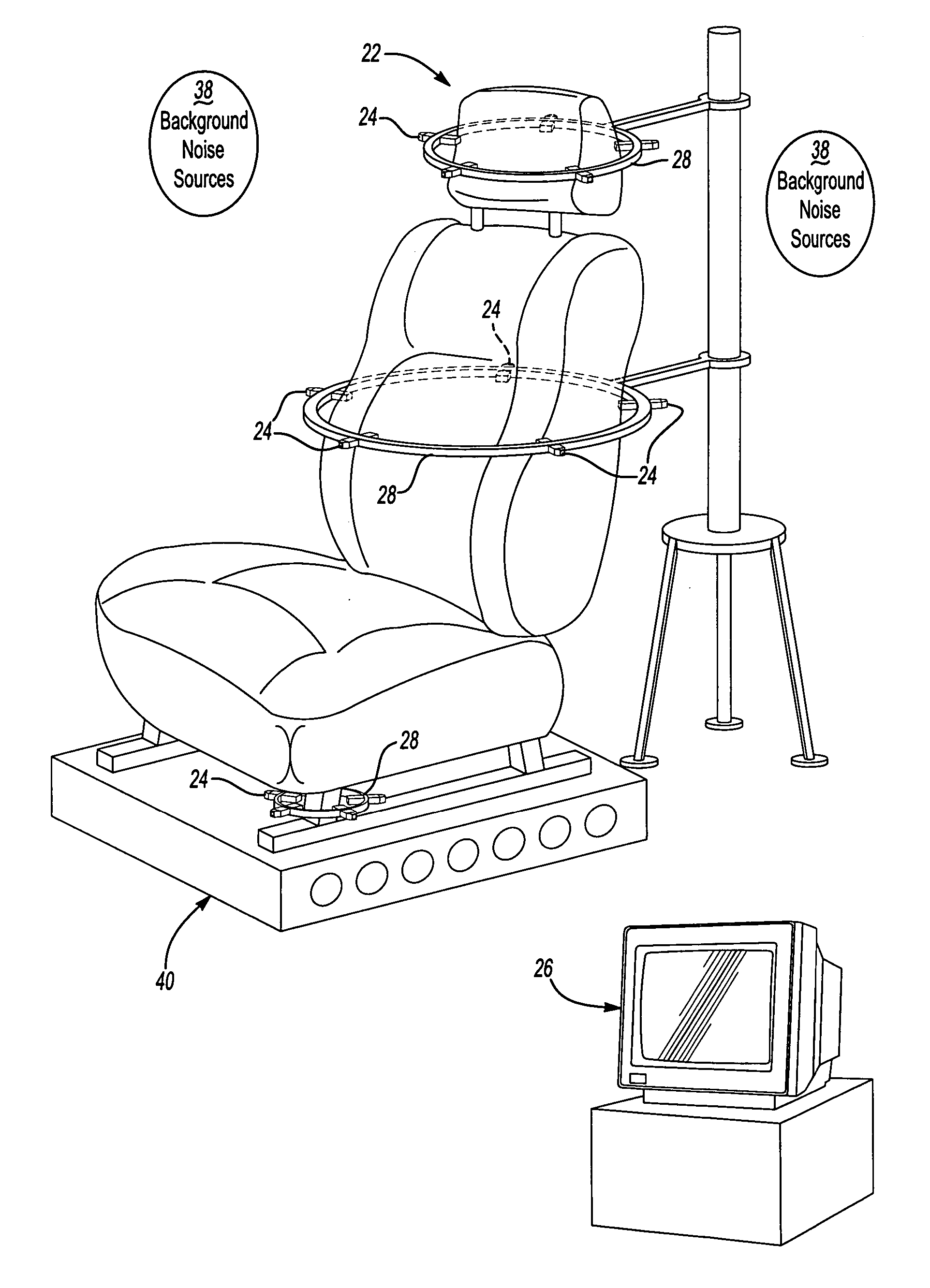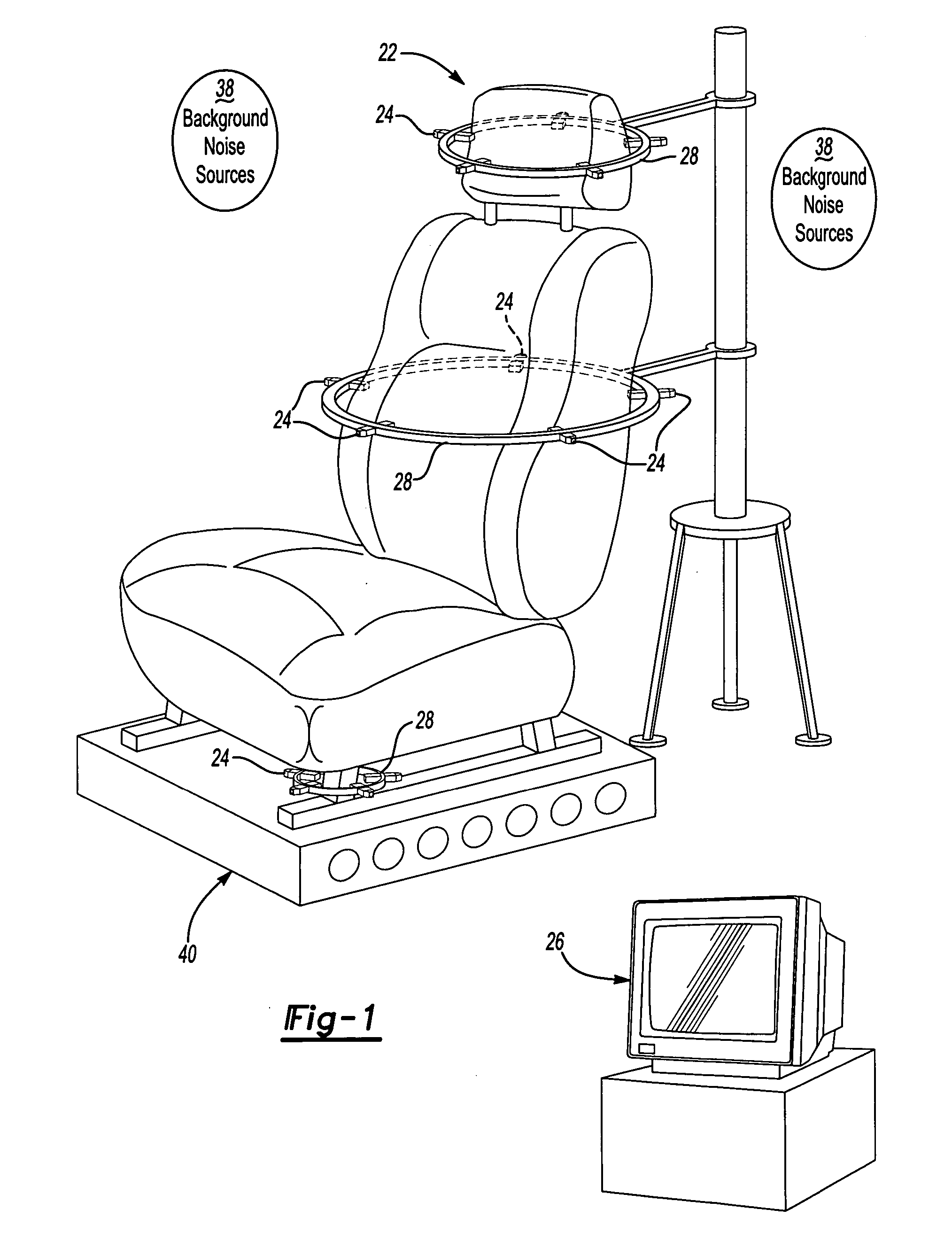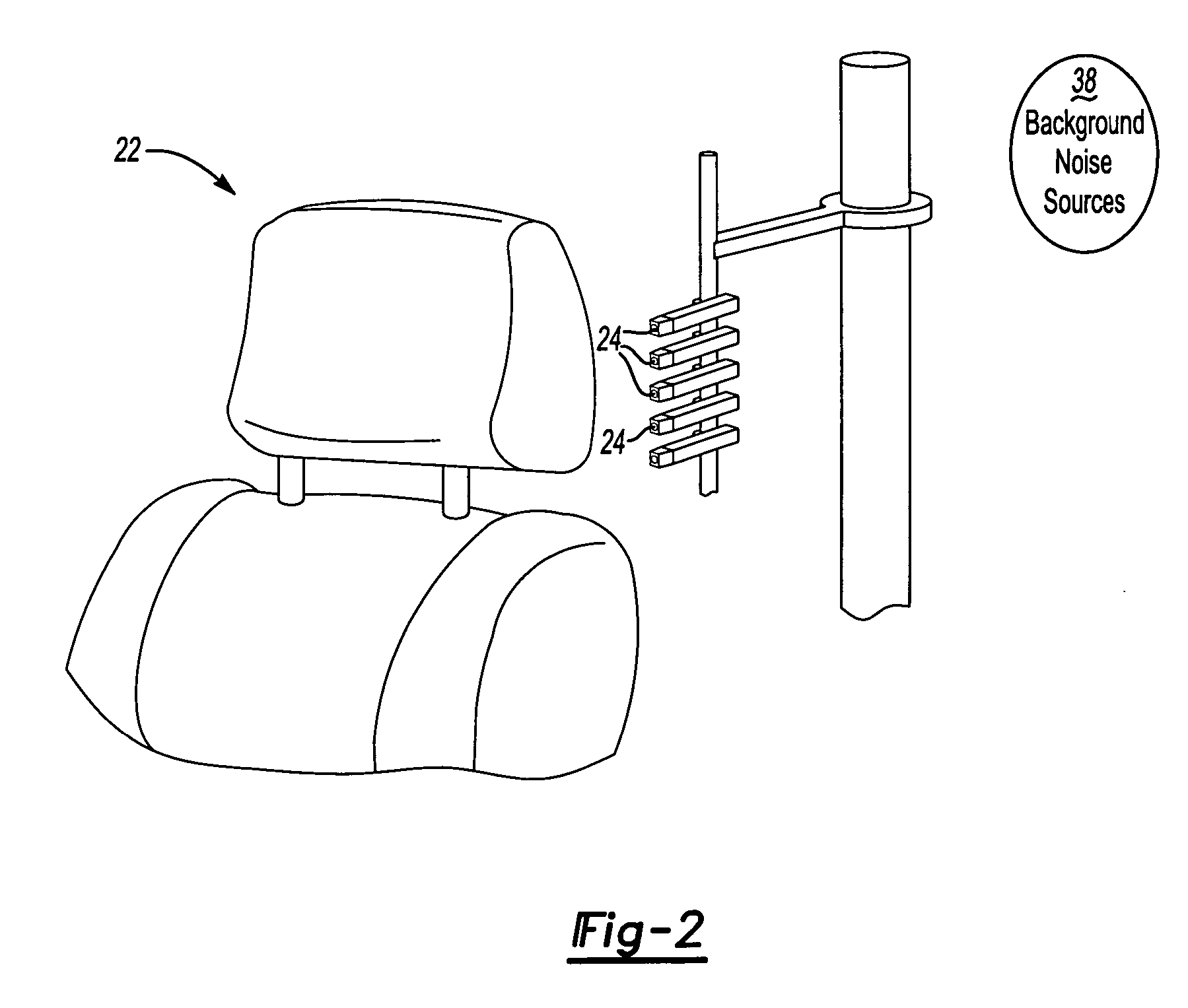Snapshot of noise and acoustic propagation
a technology of acoustic propagation and noise, applied in the field of noise and acoustic propagation, can solve the problems of less mobile, non-ideal environment, and inability to analyze the characteristics of a target source using the shels method, and achieve the effect of eliminating background sound, less mobile, and accurate and repeatable results
- Summary
- Abstract
- Description
- Claims
- Application Information
AI Technical Summary
Benefits of technology
Problems solved by technology
Method used
Image
Examples
Embodiment Construction
[0018] A first example of a noise diagnostic system 20 according of the present invention is shown in FIG. 1 taking measurements from a noise source 22, in this case a vehicle seat. The system 20 generally comprises a plurality of transducers 24, such as microphones, connected to a computer 26 (connections not shown). The computer 26 may include additional hardware such as a signal analyzer or a digital sound processing computer board (not shown). As is well-known, the computer 26 includes a processor operating a computer programs stored on computer storage media, which may be one or more of RAM, ROM, hard-drive, CD-ROM, DVD, optical, electronic or magnetic media, or any other computer-readable medium. Computer media stores a computer program, which when executed by processor performs the steps described below, including performance of the algorithms of the present invention described below.
[0019] In FIG. 1, each of the transducers 24 are mounted to a ring 28 that surrounds a porti...
PUM
 Login to View More
Login to View More Abstract
Description
Claims
Application Information
 Login to View More
Login to View More - R&D
- Intellectual Property
- Life Sciences
- Materials
- Tech Scout
- Unparalleled Data Quality
- Higher Quality Content
- 60% Fewer Hallucinations
Browse by: Latest US Patents, China's latest patents, Technical Efficacy Thesaurus, Application Domain, Technology Topic, Popular Technical Reports.
© 2025 PatSnap. All rights reserved.Legal|Privacy policy|Modern Slavery Act Transparency Statement|Sitemap|About US| Contact US: help@patsnap.com



